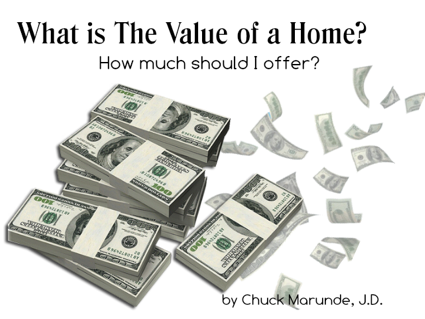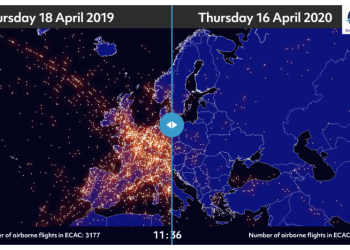There is a way to calculate the value of a home, aka the fair market value (FMV). If you know the FMV, you have very valuable information when it comes to making an offer. There are several methods to determine the value of a home.
The replacement cost approach is where I start, because it is always interesting to know what it would cost to build a similar home on a similar lot. If you can buy the lot and build a home cheaper than you can buy an existing home, you will probably choose to build. Of course, in a recession the replacement cost will be much higher than buying the same or similar home (20% to 30% in this market).
The Value of a Home
In a weak market, if I’m showing a home to buyers, and I calculate the replacement cost at $400,000, if the home is currently listed at $345,000, I can have confidence my buyers are not going to pay more than the true value of the home based on replacement cost. We still have to look at comps, of course, but the greatest fear most retirees have today when they buy their home is the fear of overpaying.
The Tax Assessor’s value is also a good way to check or affirm what the comps are telling us. The tax assessment is supposed to represent the real value of a home, but the assessment could be high or low, and by a significant margin. The assessor’s software program that collects and compares properties is all good information, but it can be behind the market by a period of months or even years in some cases. And sometimes the assessor’s value is exactly right.
The comparative market analysis using sales comps is clearly the best method to arrive at the true value of a home. It is the method banks and mortgage companies use when they decide whether or not to make a loan and use the house as security. The trick with using comps is that they must be good comps. In other words, the comps must be homes that are truly similar and in similar neighborhoods. Homes that make the best comps are similar in architectural style, built around the same time period, have similar construction materials and equal labor quality, have similar views, have similar acreage and privacy, have similar utilities, and are about the same distance from shopping and schools.
In a major metropolitan area or a large rural subdivision, you will have the best chance of finding comps that are truly similar, but in a rural area or in a small market in the country, such as Sequim, Washington, many of the closest comps are not very similar.
Expertise on the Value of a Home
The expertise of the person (appraiser, real estate agent) who does the comp analysis becomes extremely important. An inexperienced agent who slaps together a comp report using dissimilar homes will arrive at a FMV, but it will be low or high, and maybe by a lot. This is a case where experience is everything.
Now we finally get to what I am calling the “supply and demand factor.” This is my subjective approach to arriving at true FMV. I don’t use this approach by itself. It is the last method I apply when examining value.
After working with hundreds of buyers over three decades, I’ve learned how my buyers think, what their preferences are, what they don’t like, and what they are willing to compromise on. I have seen how certain features affect them as they walk into a home and what outdoor features impress them. I have assimilated my buyers’ feelings and impressions of value. This is how I can walk into a home today, and have a gut feeling for what the FMV is to a buyer in today’s market.
In economics this interaction between buyers and sellers is called supply and demand, and it determines the value of a home. As I look through my clients’ eyes, and as I consider what has sold that is similar, I have a gut feeling for what I think FMV is. If my gut feeling sends me warning signals about the price, we go back to the drawing board to examine value. While all of this is admittedly subjective, it is no less valuable for buyers when it comes to making an offer that is reasonable. By going through each of these analyses, you really can capture a fairly reliable estimate of the true fair market value of a home.
Last Updated on September 20, 2019 by Chuck Marunde

































